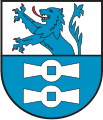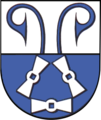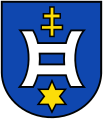Mill iron

A mill iron is a central component in the grinding process of a mill . The iron has the function of a shaft or hub , it carries the upper, rotating rotor stone , holds the stone vertically and radially in position and also transmits the torque to the rotor.
The component consists of a rod ( "spindle" , mill iron in the narrower sense, item 11 in the scheme), which is inserted through the central hole ( "eye" ) of the millstone pair and which is mounted on an anchor iron that is attached to the lower stone, the floor stone , is attached. A driving bar (called “pick” or “driver” ; pos. 9 and 10 in the diagram) is firmly connected to the spindle (usually with a positive fit by a square , a claw or the like ), which rotates into corresponding recesses in the upper The runner stone engages and thus transfers the torque from the spindle to the stone.
Hicks exist in various forms. Simple designs are little more than a straight flat iron or a rectangular plate with a hole. More elaborate irons are shaped like a cross or star.
Use in heraldry
The mill iron - more precisely the pick , i.e. the iron that carries and turns the runner - is often used as a common figure in heraldry , often in connection with a millstone.
Beinhorn coat of arms with clearly recognizable mill iron in the mill stone
Mühlhausen coat of arms with a mill iron in the base of the shield
Ruthweiler coat of arms with two mill irons in the base of the shield
Coat of arms of Barterode with three mill irons in the base of the shield
Coat of arms of Mühlpfad with two mill irons and a millstone in the shield head
Barum coat of arms with mill iron in the first field
Kaarst coat of arms with three mill irons in the front field
Wallerfangen coat of arms with Mühleisen, Lorraine cross and star
Web links
Individual evidence
- ↑ Berthold Moog: The flour mill . In: Association of Swiss Mill Friends (Ed.): Mill letter . No. 8 - October 2006 ( full text as PDF on muehlenfreunde.ch).











